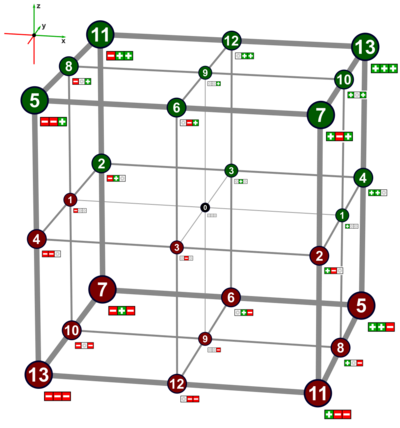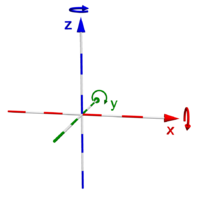Octant (solid geometry)
An octant in solid geometry is one of the eight divisions of a Euclidean three-dimensional coordinate system defined by the signs of the coordinates. It is similar to the two-dimensional quadrant and the one-dimensional ray.[1]
The generalization of an octant is called orthant.
Naming and numbering
A convention for naming an octant is to give its list of signs, e.g. (+,−,−) or (−,+,−). Octant (+,+,+) is sometimes referred to as the first octant, although similar ordinal name descriptors are not defined for the other seven octants. The advantages of using the (±,±,±) notation are its unambiguousness, and extensibility for higher dimensions.
The following table shows the sign tuples together with likely ways to enumerate them. A binary enumeration with − as 1 can be easily generalized across dimensions. A binary enumeration with + as 1 defines the same order as balanced ternary. The Roman enumeration of the quadrants is in Gray code order, so the corresponding Gray code is also shown for the octants.
|
| |||||||||||||||||||||||||||||||||||||||||||||||||||||||||||||||||||||||||||||||||||||||||||||||||||||||||||||||||||||||||||||||||||||||||||||||||||||||||||
Verbal descriptions are ambiguous, because they depend on the representation of the coordinate system. In the two depicted representations of a right-hand coordinate system, the first octant could be called right-back-top or right-top-front respectively.
See also
References
 |




